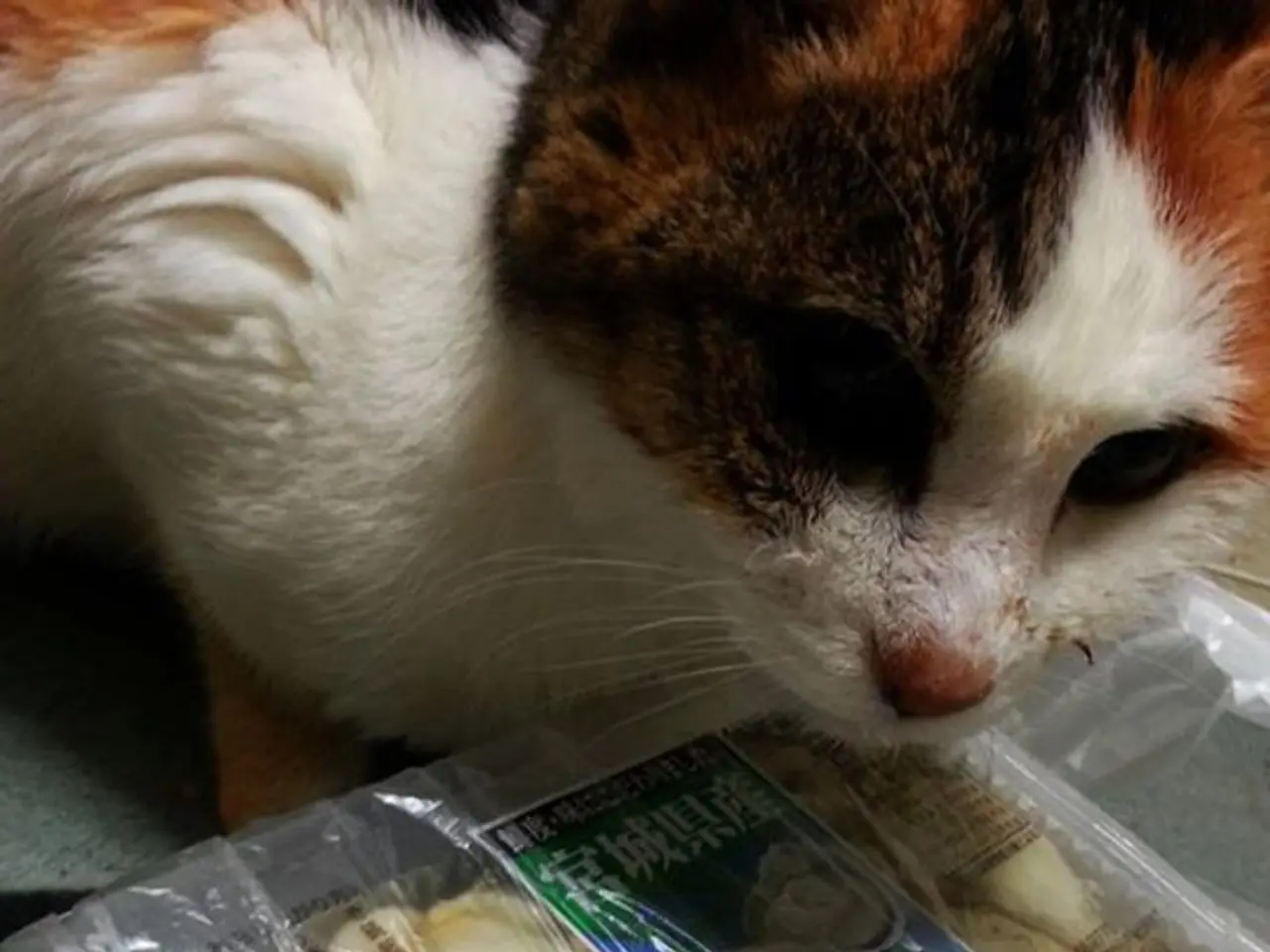Cat Food Preservation: 7 Precautions for Safety
In the quest to provide the best nutrition for our feline friends, it's essential to understand the importance of proper cat food storage and handling. By adhering to these practices, we can ensure the freshness, nutritional quality, and safety of our cat's food while preventing pests and bacterial or mold growth.
Firstly, it's crucial to keep food in its original packaging if possible. The packaging is designed to maintain nutritional quality and freshness. If transferring is necessary, use a clean, dry, airtight container to prevent exposure to air and moisture.
Storing cat food in a cool, dry place with temperatures ideally below 80°F (27°C) is also recommended. Avoid direct sunlight and humid areas to slow nutrient degradation and reduce spoilage risk.
For long-term storage of dry cat food, consider using Mylar bags with oxygen absorbers sealed by a heat sealer, then place these bags inside food-grade buckets with waterproof, pest-proof lids (like gamma seal lids). This method prevents oxygen exposure, moisture, pests, and contamination.
Opened dry food should be resealed tightly or transferred to airtight containers to keep out air, moisture, and pests. Store in a cool, dry area away from heat sources.
For wet or canned cat food, refrigerate any unused portions promptly in clean, sealed containers and use within 2-3 days to prevent bacterial growth.
Raw or freeze-dried treats should be stored in the refrigerator if used within a few days, or frozen in airtight freezer bags/containers for longer periods. Avoid thawing and refreezing to maintain quality.
Label containers with the type, date opened, and expiration to keep track and ensure freshness by using older stock first.
Prevent cross-contamination by keeping pet food separate from human food and designating specific storage areas or shelves for pet food. Regularly inspect stored food for changes in smell, texture, or color; discard if spoilage is suspected.
To avoid pests (insects or rodents), store pet food in sealed, rodent-proof containers, keep storage areas clean, and avoid leaving food exposed.
Lastly, wash water bowls at least once a day, and ensure cans of cat food are sealed tight, not appearing swollen or bulging. Wash and dry the measuring scoop for dry food at least a few times a week, and wipe down kitchen counters or any surface your cat's food has come into contact with.
By following these guidelines, we can protect the food’s nutrients, safety, and palatability for our cats, controlling exposure to oxygen, moisture, heat, and pests while ensuring hygienic conditions.
Maintaining a pet-friendly lifestyle at home includes keeping pet health a priority, and part of that involves proper management of pet food. In addition to storage and handling practices for cat food, it's essential to organize and separate pet food from human food to prevent cross-contamination and maintain a clean home-and-garden environment.




